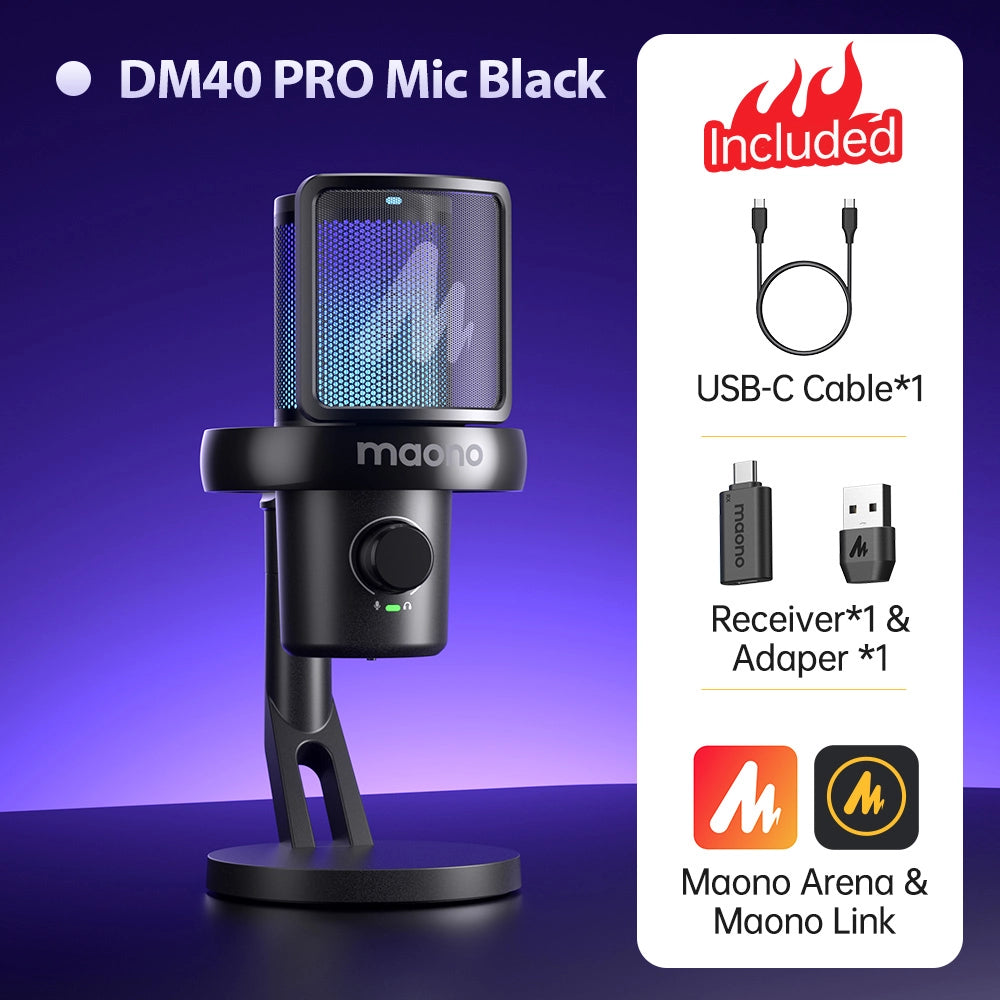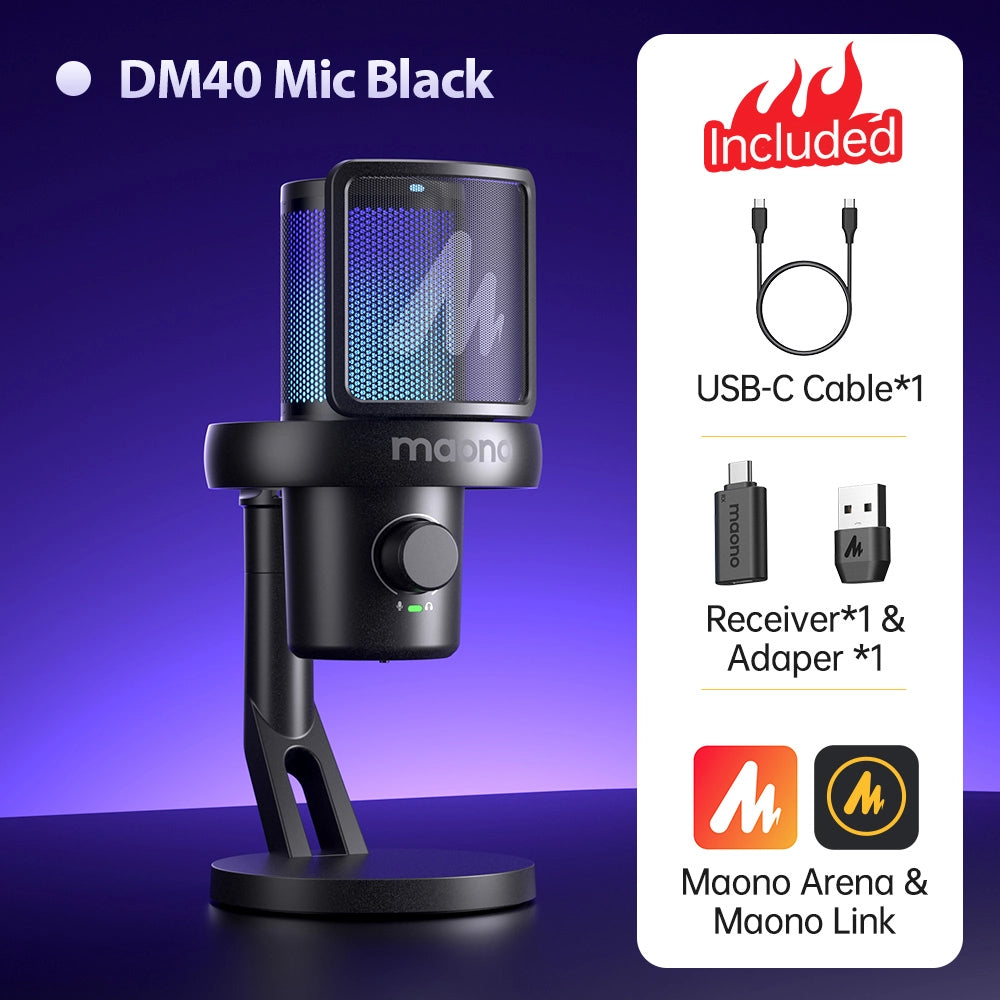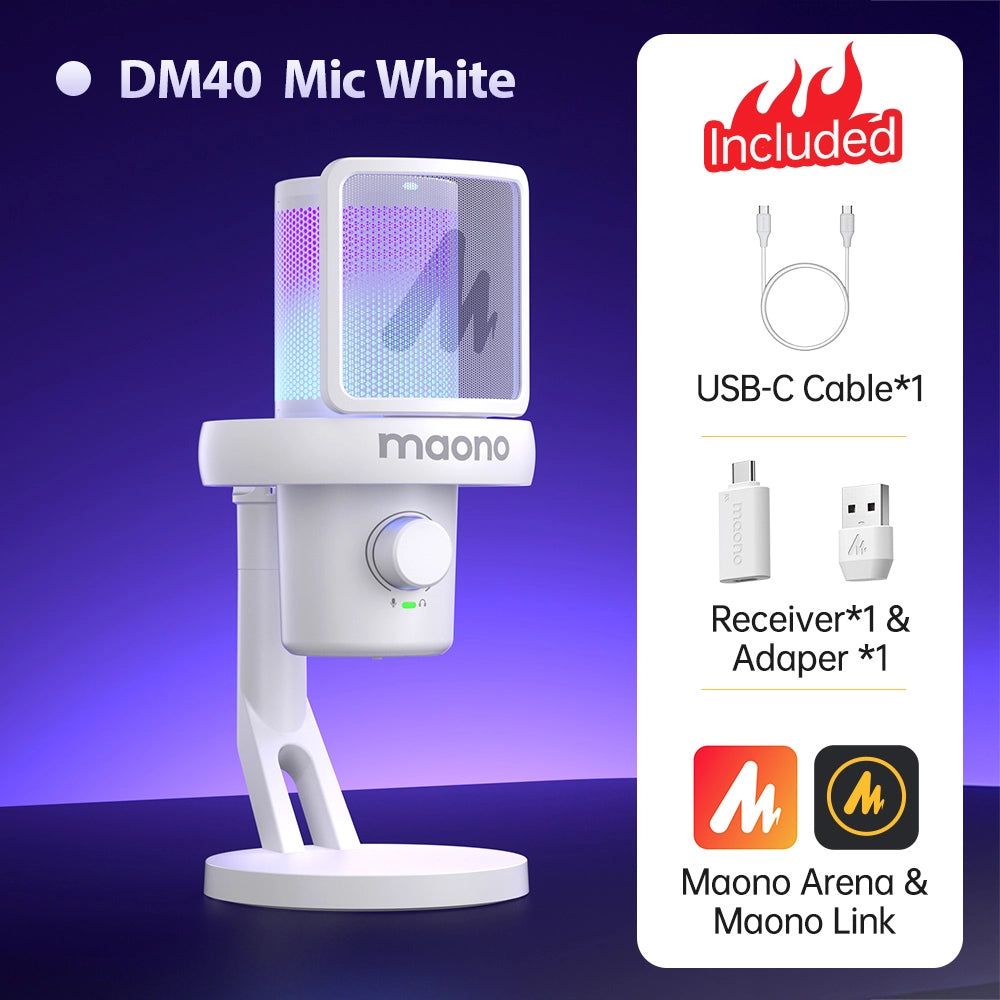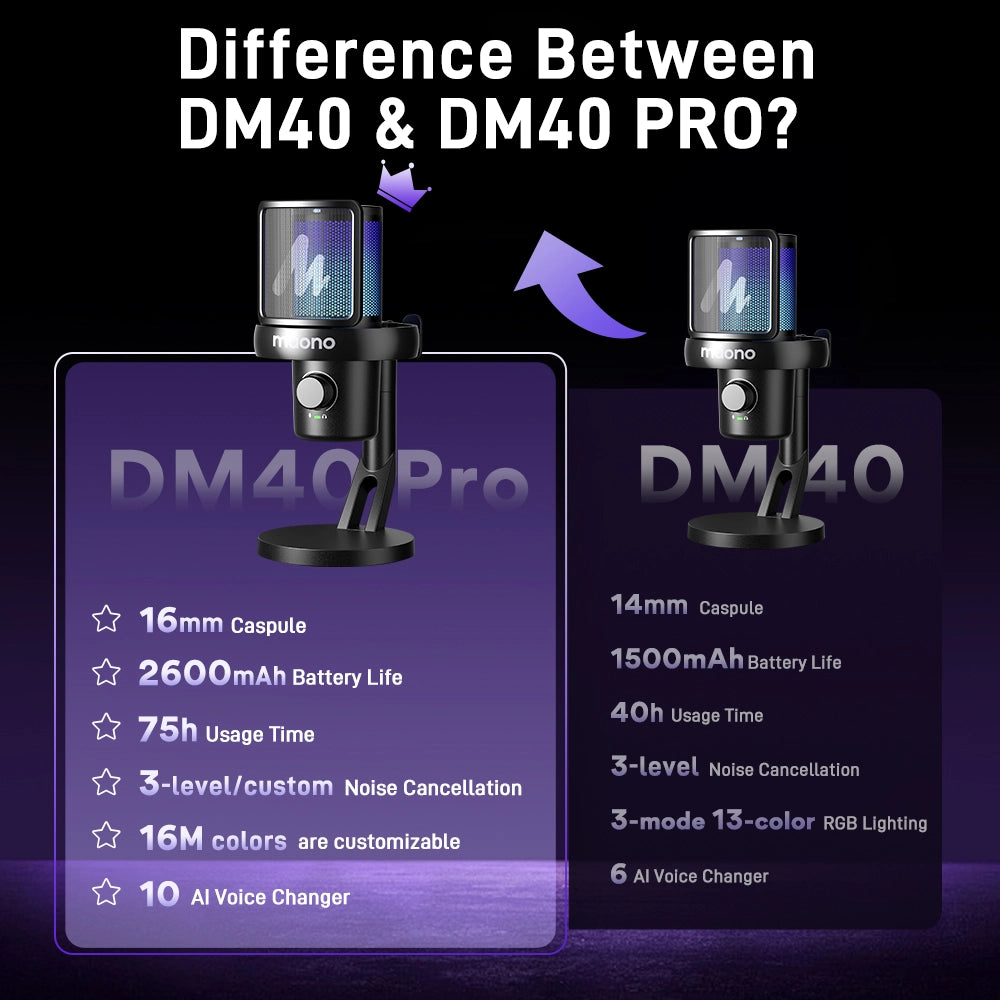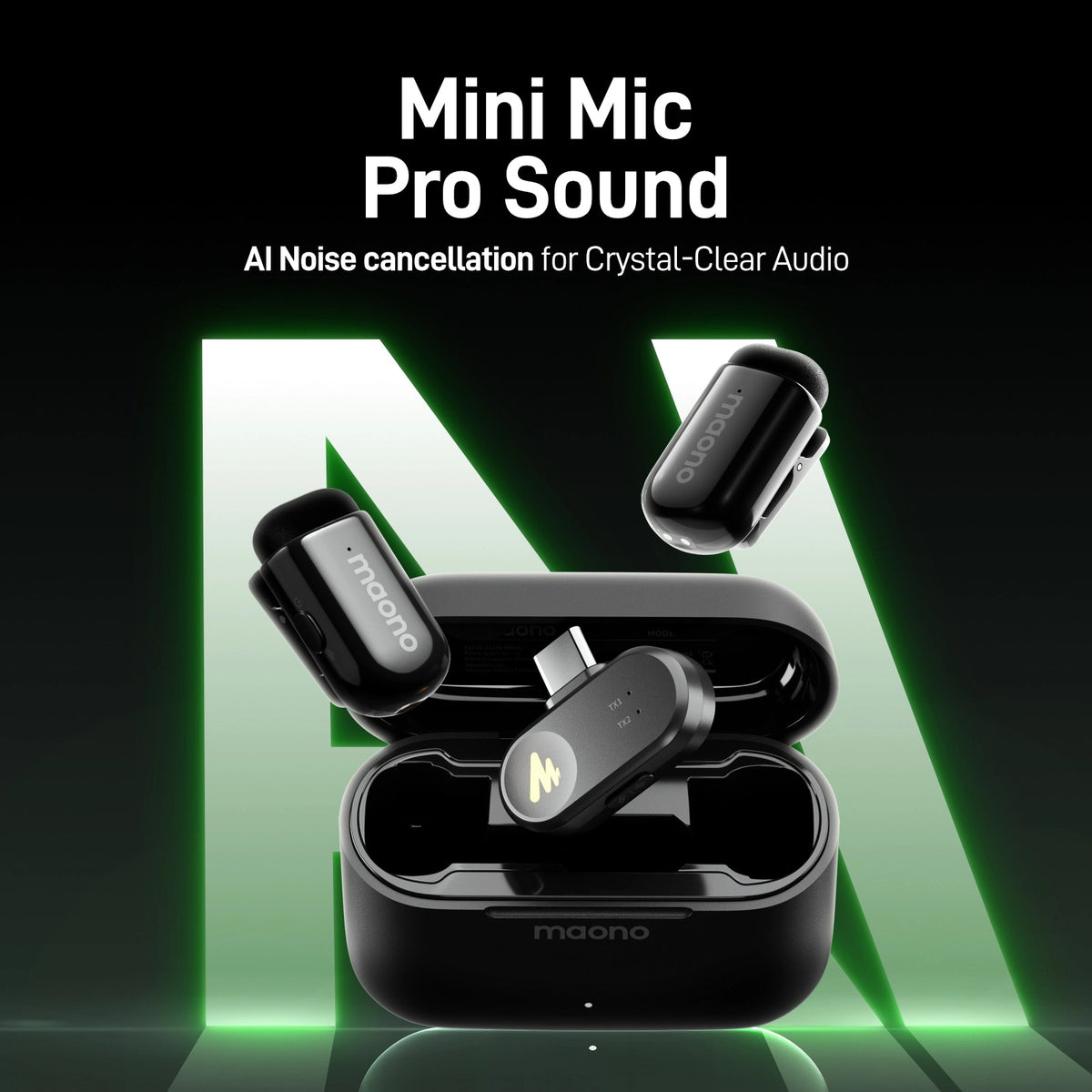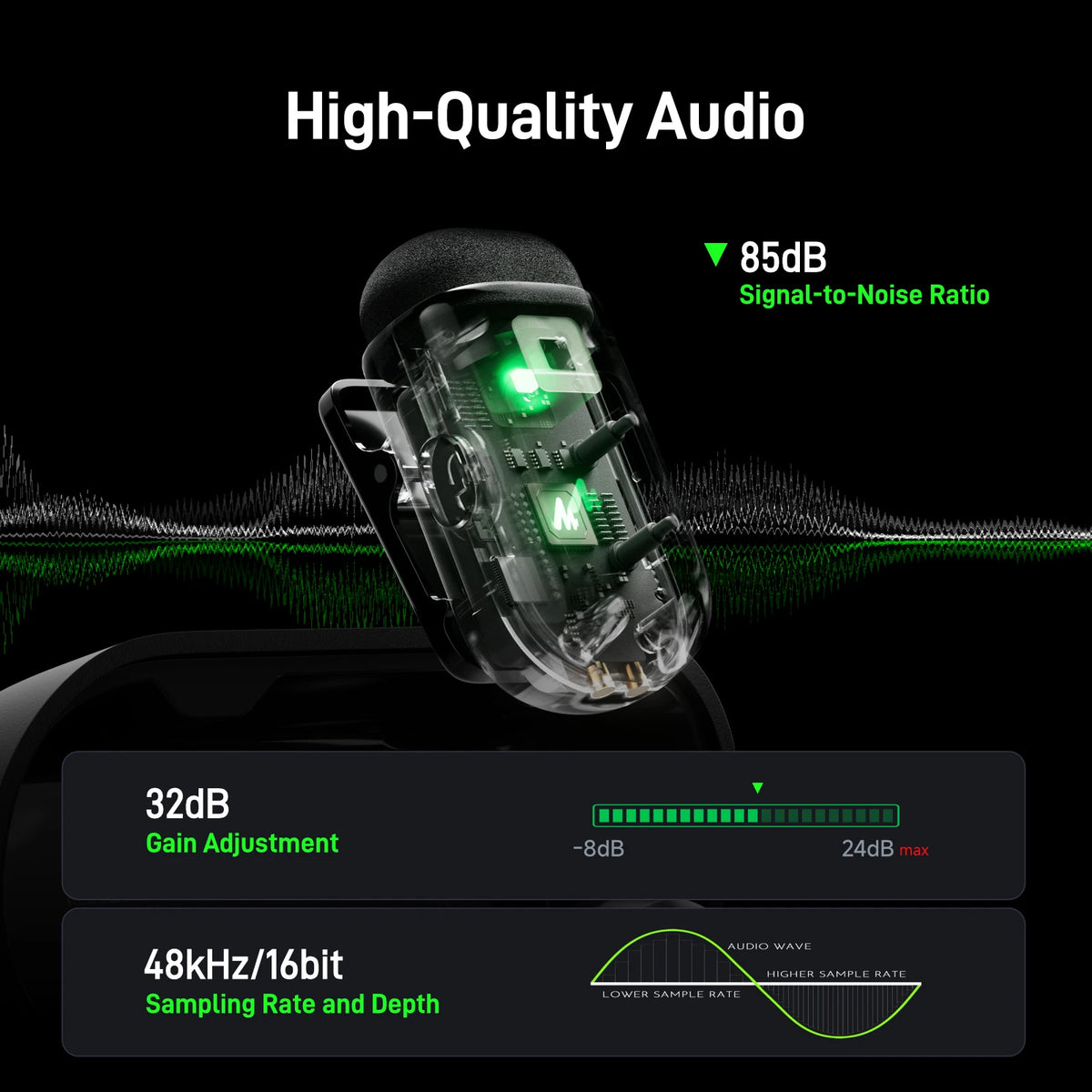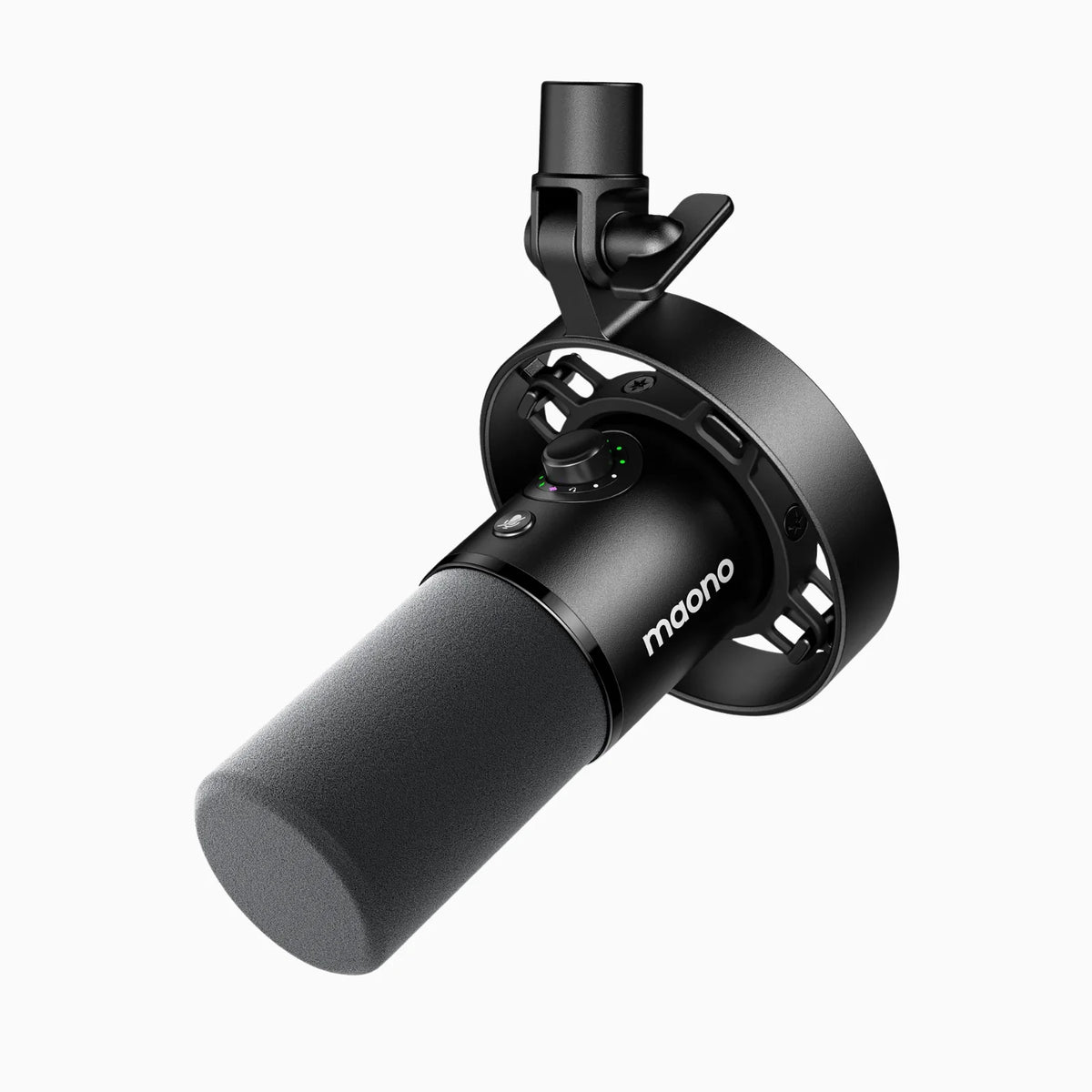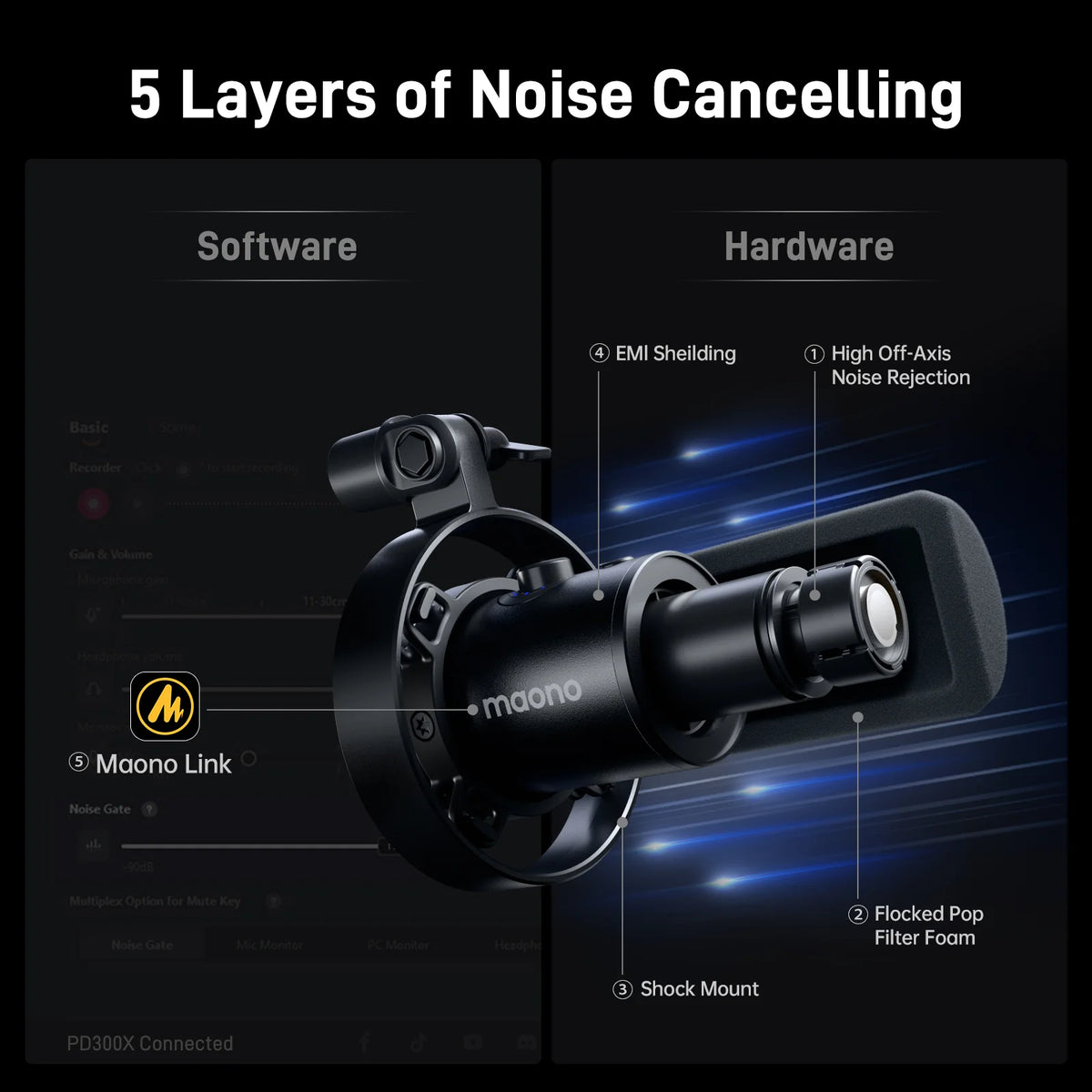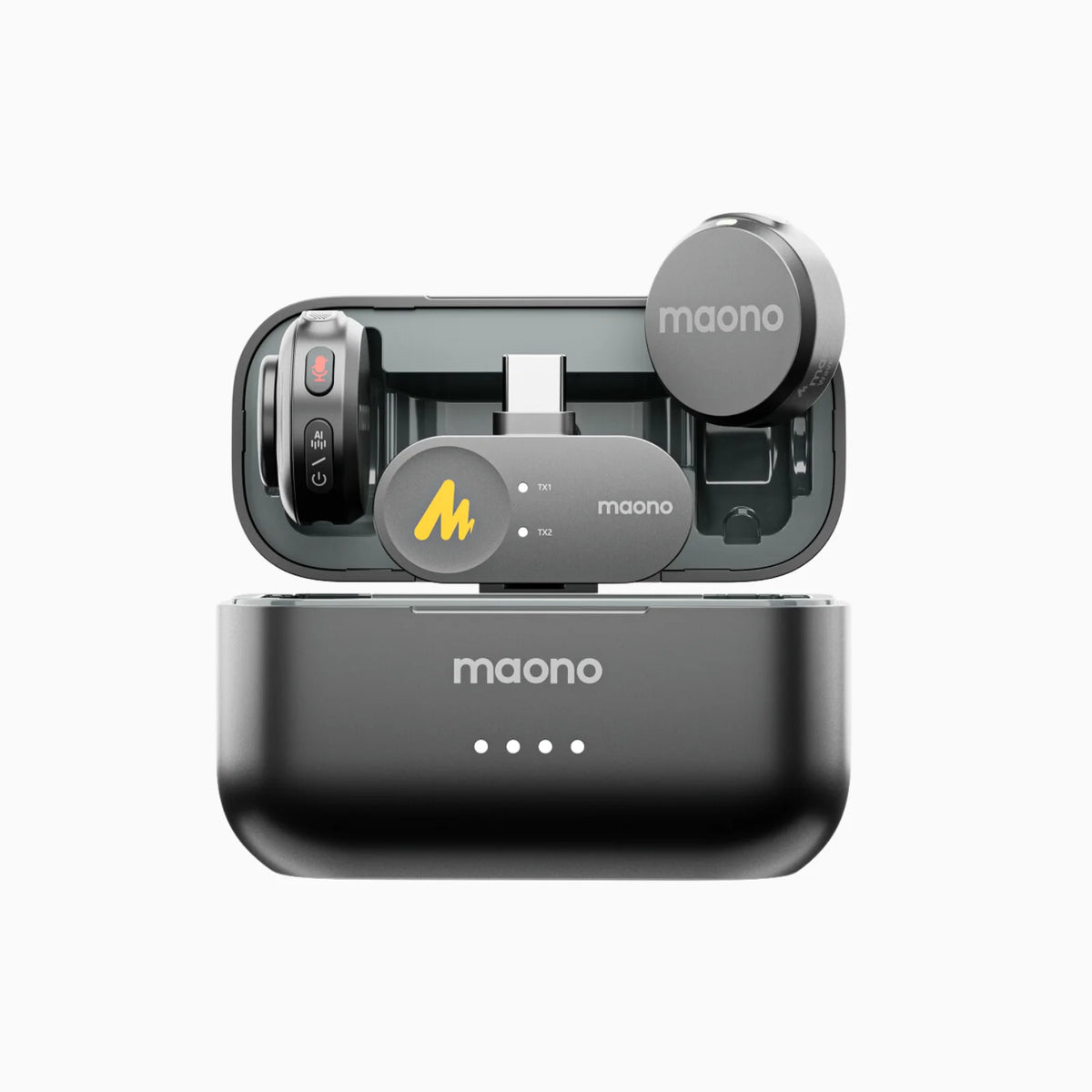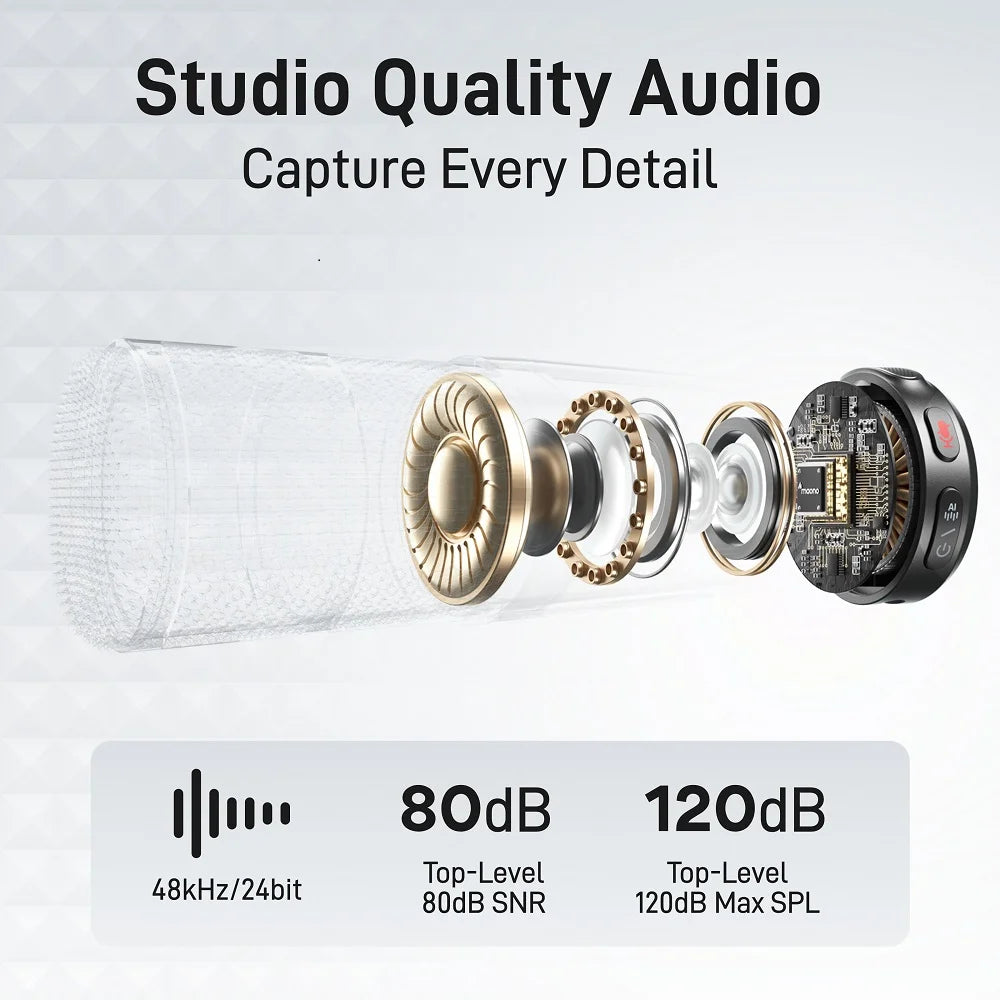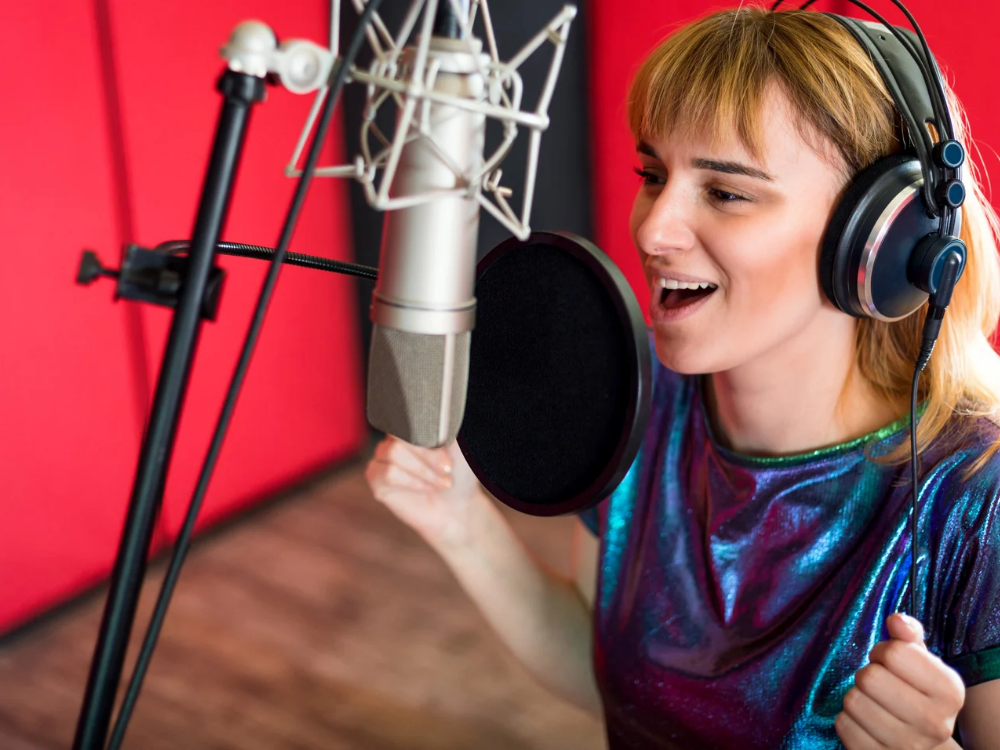Nowadays, condenser microphones, also commonly known as capacitor microphones, are becoming increasingly popular and continue to be widely used in voice-over work.
Capacitor microphones or condenser microphones, are a type of microphone that uses a capacitor (or condenser) to convert sound waves into electrical signals. They are renowned for their ability to capture detailed, high-quality audio, making them a preferred choice for professional studios, voice-over work, music recording, and broadcasting.
Good high-quality capacitor mics can produce sound of excellent quality and are useful for voice-over work. Capacitor microphones may produce high-quality sound with clear transients in regulated settings, which typically entails near mic placement. The mid-frequencies are sweetened by the inherent presence lift found in many large diaphragm microphone versions.
How to Pick Up the Best Mic for Voice Over
Voice-over work requires a microphone capable of capturing your voice’s details and richness while minimizing background noise. Selecting the right microphone can make all the difference, whether you’re narrating audiobooks, creating character voices, or recording professional advertisements. This guide will help you navigate the choices and determine the best microphone for your needs, focusing on the suitability of a condenser microphone for voice-over work.
Can You Use a Condenser Microphone for Voice Over Work?
If you’re wondering if you could use a condenser microphone for voice over work, Yes, you can—and should—consider using a condenser microphone for voice-over work. Condenser microphones are renowned for their high sensitivity, wide frequency response, and ability to capture the subtleties of the human voice with precision. They are the go-to choice for many professionals due to their superior audio quality. However, their suitability depends on your recording environment and budget.
What Are Some Good Condenser Microphones for Voice Overs?
Choosing the right condenser microphone is essential for achieving professional-quality recordings. Below are some highly recommended options:
Audio-Technica AT2020
This affordable yet reliable mic offers a wide dynamic range and excellent detail. Its cardioid polar pattern minimizes background noise, making it ideal as a condenser microphone for beginner voice over artists.
MXL 990
Known for its vintage look and warm sound, the MXL 990 is a popular choice for beginners and semi-professionals.
Rode NT1-A
A favorite for its ultra-low noise and smooth frequency response, the NT1-A captures vocals with incredible clarity.
AKG C214
With its robust build and versatile sound, this mic is perfect for capturing nuanced vocals while remaining budget-friendly compared to higher-end models.
Neumann U87
A legendary mic in the voice-over world, the U87 provides unmatched clarity, depth, and detail, making it a top choice for professional studios.
Sennheiser MKH 416
Often used in film and broadcast, the MKH 416 excels in capturing voiceovers with presence and focus for its condenser design.
Maono PM320
Maono PM320 is an XLR condenser microphone and is ideal for both beginners and professionals in studio setup. It offers high-quality sound and captures fine details of human voice.

Maono PM500
Combining durability and performance, this Maono PM500 XLR mic is a condenser microphone that features Cardioid pickup pattern and off-axis sound suppression to reduce background noise, providing excellent sound quality for entry-level voice-over work.

What Are the Benefits of Using a Condenser Microphone for Voice Over Work?
Condenser microphones are favored for voice-over work due to several benefits:
1. Sensitivity: They capture subtle details in your voice, bringing depth and richness to recordings.
2. Wide Frequency Response: These mics can handle a broad range of frequencies, ensuring every nuance is heard.
3. Low Self-Noise: High-quality condenser mics, like the Rode NT1-A, have minimal internal noise, preserving the clarity of your voice.
4. Natural Sound Reproduction: They excel in capturing the natural tone and texture of your voice, critical for voice-over projects.
What Are the Pros and Cons of Using a Dynamic Microphone Over a Condenser Microphone for Voice Overs?
Dynamic microphones are another option for voice-over artists, but they differ significantly from condensers:
Pros of Dynamic Microphones
Durability: Built to last, they’re ideal for less controlled environments.
Less Sensitivity: They handle loud sounds better, reducing the risk of distortion.
Cons of Dynamic Microphones
Limited Frequency Range: They might miss subtle details in your voice.
Lower Sensitivity: Requires more effort to capture quieter or softer tones.
Dynamic microphones are best suited for live performances or noisy environments, whereas condensers are preferred for controlled studio settings.
When Should a Condenser Microphone and a Dynamic Microphone Be Used?
- Condenser Microphones: Ideal for studio recordings, voice-over work, and projects requiring fine detail and clarity.
- Dynamic Microphones: Better suited for outdoor recordings, live events, or environments with significant background noise.
What Is the Difference Between a Dynamic and Condenser Microphone for Voice Over Work? Which One Is Better and Why?
Differences
- Sensitivity: Condensers are more sensitive, capturing subtle voice nuances, whereas dynamics are less sensitive but better for loud sound sources.
- Frequency Response: Condensers generally have a broader range, making them better for detailed recordings.
Which Is Better for Voice Overs?
Condenser microphones are typically better for voice-over work because of their ability to capture the intricate details and natural tone of the human voice. However, dynamic microphones can be useful in specific scenarios where durability and noise rejection are priorities.
What Are the Benefits of Using a Condenser Microphone for Voice Over Work?
Condenser microphones are favored for voice-over work due to several benefits:
- Sensitivity: They capture subtle details in your voice, bringing depth and richness to recordings.
- Wide Frequency Response: These mics can handle a broad range of frequencies, ensuring every nuance is heard.
- Low Self-Noise: High-quality condenser microphones, like the Rode NT1-A, have minimal internal noise, preserving the clarity of your voice.
- Natural Sound Reproduction: They excel in capturing the natural tone and texture of your voice, critical for voice-over projects.
What Are the Pros and Cons of Using a Dynamic Microphone Over a Condenser Microphone for Voice Overs?
On the other hand, dynamic microphones are another option for voice-over artists, but they differ significantly from condensers:
- Pros of Dynamic Microphones
- Durability: Built to last, they’re ideal for less controlled environments.
- Less Sensitivity: They handle loud sounds better, reducing the risk of distortion.
- Cons of Dynamic Microphones
- Limited Frequency Range: They might miss subtle details in your voice.
- Lower Sensitivity: Requires more effort to capture quieter or softer tones.
Dynamic microphones are best suited for live performances or noisy environments, whereas condenser microphones are preferred for controlled studio settings.
When Should a Condenser Microphone and a Dynamic Microphone Be Used?
- Condenser Microphones: Ideal for studio recordings, voice-over work, and projects requiring fine detail and clarity.
- Dynamic Microphones: Better suited for outdoor recordings, live events, or environments with significant background noise.
Frequently Asked Questions
1. What Audio Quality Can I Expect from a Condenser Microphone?
A condenser microphone delivers high-resolution audio with crisp clarity, wide frequency response, and excellent transient response. The result is a professional sound with depth and richness, making it ideal for capturing the subtle textures of your voice.
2. How Do I Position My Condenser Microphone for Optimal Sound?
- Distance: Keep the mic about 6–12 inches away from your mouth.
- Angle: Position it slightly off-axis to minimize plosives.
- Pop Filter: Use a pop filter to reduce plosive sounds.
- Room Treatment: Record in a treated space to avoid echo and background noise.
3. How to Choose the Best Condenser Microphone for Voice Over Work?
Budget: Determine how much you’re willing to invest.
Frequency Response: Look for a mic that captures the full range of your voice.
Polar Pattern: Cardioid patterns are ideal for isolating your voice from background noise.
Connectivity: Decide between USB or XLR depending on your setup.
Brand Reputation: Choose trusted brands like Audio-Technica, Rode, and Maono.
Final Thoughts
Selecting the best microphone for voice-over work requires understanding your needs and the strengths of different microphone types. Condenser microphones are widely regarded as the top choice for capturing rich, detailed vocal performances, but dynamic microphones also have their place in specific scenarios.
From budget-friendly options like the Audio-Technica AT2020 or Maono PM500 or PM320 to high-end models like the Neumann U87, there’s a microphone for every voice-over artist. By investing in the right equipment and setting up your recording space properly, you can achieve professional-quality audio that brings your voice to life.










